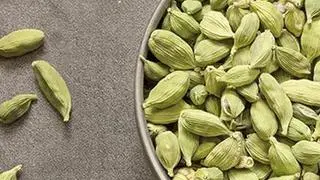The Yavatmal district of the Vidarbha region in Maharashtra has been a centre of cotton farmers’ suicides for the past 15 years, due to crop losses and pests attacks. In September 2017, the district was against struck with a larger tragedy, when a large number of farmers and farm labourers died while spraying chemical pesticides on pink bollworms (PBW). It also led to a long-term effect on the health of those who survived the poisoning. This year, too, the PBW infestation has been seen in Yavatmal as well as in neighbouring districts, but the number of attacks has not crossed a threshold that will cause economic damage.
Agriculture scientist and entomologist Pramod Magar, who works for the Krishi Vigyan Kendra (KVK) in Yavatmal, believes that the farmers can easily manage the menace this year and in the coming years without resorting to the heavy use of toxic and expensive pesticides.
The ICAR in 2005 established the KVK for the Yavatmal district under Panjabrao Deshmukh Krishi Vidyapeeth, Akola.
Magar, in an interview with BusinessLine , said that PBW can be tackled using ecologically friendly integrated pest management techniques. The use of dangerous pesticide should be only used as a last resort. Edited excerpts:
How can farmers keep PBW at bay? What are the learning from your past experiences?
Since 2016, cotton growers are facing the threat of PBW in cotton crop all over Maharashtra and especially Yavatmal. The farmers and State agriculture universities managed to keep PBW away in 2018 and 2019 only because they adopted cost-effective techniques.
Similar eco-friendly integrated pest management techniques should continue, as cotton is growing very well this season due to copious monsoon rains.
Farmers have learnt that ploughing in the summer to heat up the field for about two months, crop rotation, avoiding pre-monsoon sowing and seed treatment prior to sowing and plucking of rosette flowers of the cotton plant are sure shot ways to control the PBW menace.
For pest surveillance, pheromone traps in August and September is essential along with spraying of bio-pesticide such Beauveria bassiana and neem extracts.
However, if the PBW still plagues the plants, then pesticides with green and blue triangles labels, which are less toxic as compared to the ones with red and yellow triangles, should be used.
Why do you say chemical pesticides should be a last resort for the cotton crop?
Chemical pesticides are nothing but nerve poisons which kill the insects and also have negative impacts on human health and the environment. It should be the last option only if the pests cross their respective economic threshold level. Minimal use of chemical pesticides will reduce risk to humans and other helpful organisms and insects in the field. Judicious use of toxic pesticide will also help in minimising the risk of resistance development in insects and pests.
What is the logic behind using water with a pH level of six-seven for spraying the insecticides? Does using water with higher pH value lead to the decomposition of the pesticide?
Water having a pH of six- seven is very essential for the effectiveness of any pesticide. As water is used as a medium for mixing or dissolving the pesticide, it greatly influences the effectiveness of the pesticide. When any pesticide is mixed with water, it is hydrolysed. Hydrolysis is a chemical process of breaking down of the pesticides into many smaller molecules. The pesticides usually undergo alkaline hydrolysis if water pH is greater than seven, which leads to degradation and ineffectiveness of the pesticide.
Why is the mixing of different pesticides and then spraying it on the cotton crop dangerous to the crops and the farmers? In 2017, among the various reasons attributed to the death of the farmers due to pesticide poisoning, it was also reported that the chemcials were mixed...
Every agro chemical such as pesticides, insecticides, herbicides, fungicides, bactericides and plant growth promoters have their own mode of action, chemical properties and composition, which makes them at times incompatible with one another and ultimately reduces their effectiveness. The mixing of one or more pesticides may lead to phytotoxicity to plants and poisoning to the farmers. It may also lead to resistance development in insect, pathogens and weeds.







Comments
Comments have to be in English, and in full sentences. They cannot be abusive or personal. Please abide by our community guidelines for posting your comments.
We have migrated to a new commenting platform. If you are already a registered user of TheHindu Businessline and logged in, you may continue to engage with our articles. If you do not have an account please register and login to post comments. Users can access their older comments by logging into their accounts on Vuukle.